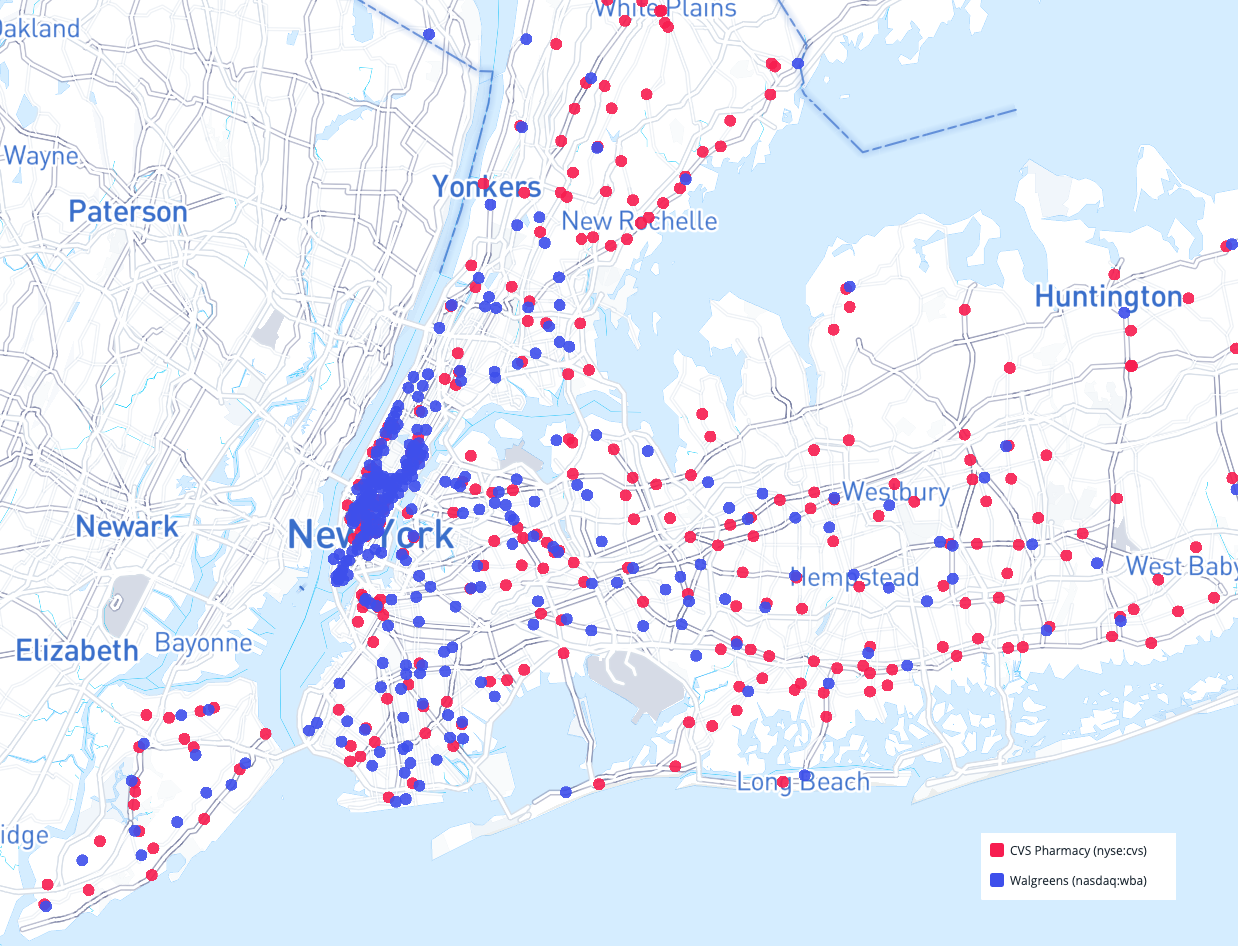On Tuesday, two hashtags were trending and building major momemntum on Twitter related to CVS ($CVS): #BoycottCVS and #CVSDeniesCare. That's because as of today, CVS is reportedly threatening to deny birth control pills to Pill Club members who use the service to help pay for their prescriptions. Backlash against CVS continues to flare as we write this, as consumers make oaths to switch to alternatives like Walgreens ($WBA) to get their prescriptions (and to buy their cosmetics and other household items).
If consumers make good on their decisions to move from CVS to Walgreens, the change will be relatively painless for most. That's because according to a proximity analysis that looked at how close the two chains are location-by-location, every CVS in the United States has, on average, 7.5 Walgreens within 5 miles.
CVS stores in the United States have, on average, 7.5 Walgreens within 5 miles
In the New York metropolitan area, some CVS stores have as many as 17 Walgreens within a half mile, with an average of 1.2 Walgreens within that distance. That's a 5-minute walk for most.
Clearly, it's a bit early to consider what this all might mean for CVS or for Walgreens. The two chains are quite similar in terms of retail outlay and number of stores. Walgreens recently announced it would be closed 200 stores just as CVS disclosed that it would slow its expansion pace, so to future for the two chains apperas to be as uncertain as ever.
About the Data:
Thinknum tracks companies using information they post online - jobs, social and web traffic, product sales and app ratings - and creates data sets that measure factors like hiring, revenue and foot traffic. Data sets may not be fully comprehensive (they only account for what is available on the web), but they can be used to gauge performance factors like staffing and sales.
Further Reading:
- Elon Musk isn't lying: Tesla has been on a year-long hiring spree for autonomous-vehicle experts
- Now that Teslas are common and hiring has flattened at the company, what is Musk & Co's path forward?
- Tesla is on a hiring spree for salespeople as it re-focuses on profits


